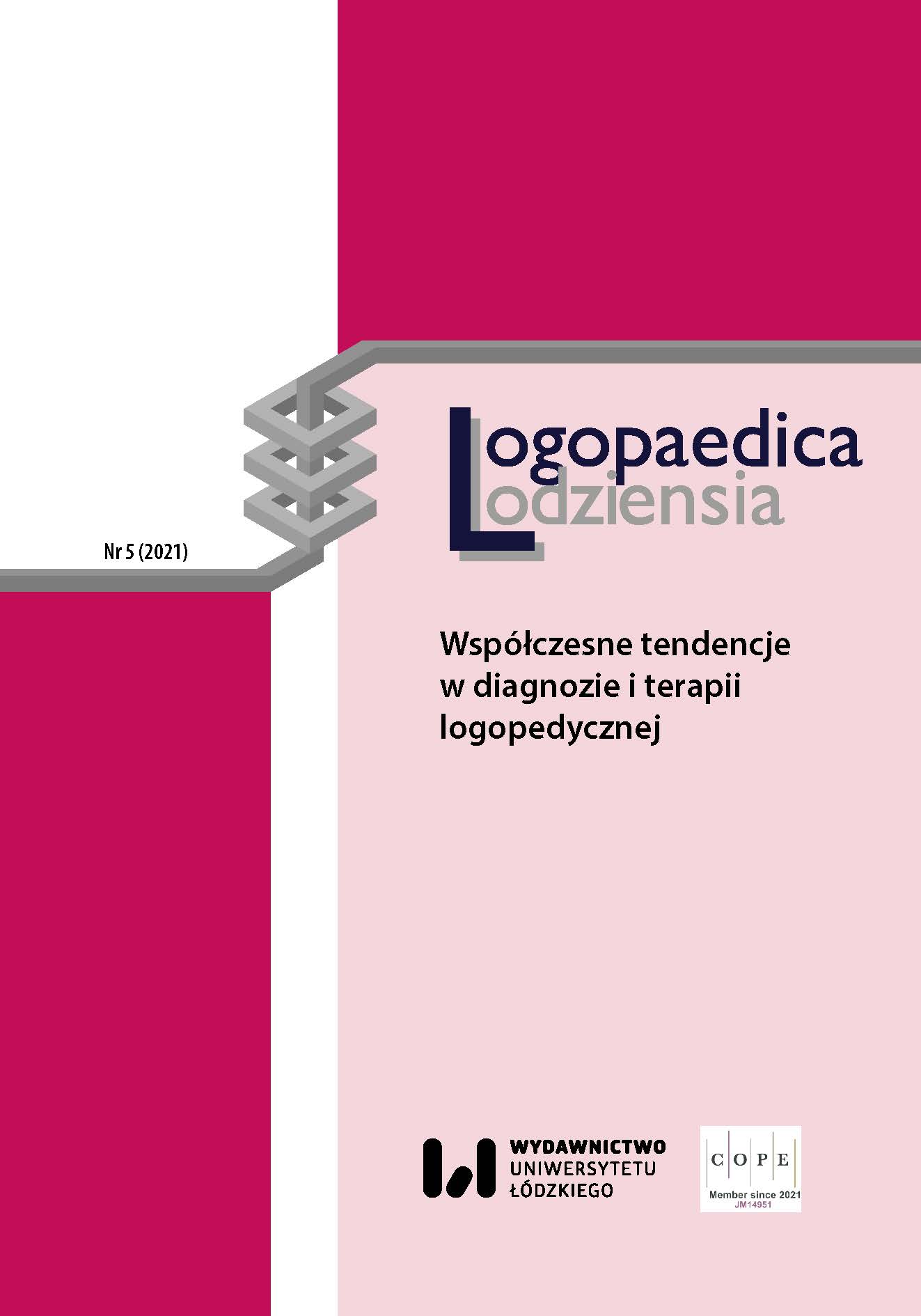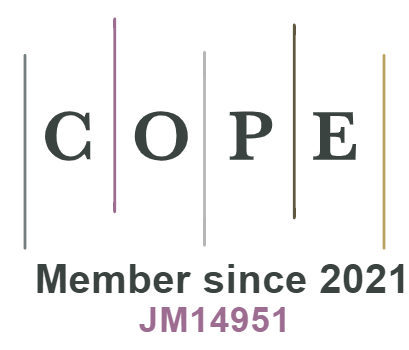Obstacles and Challenges in the Work of a Speech Therapist During the Covid-19 Pandemic
DOI:
https://doi.org/10.18778/2544-7238.05.06Keywords:
speech therapy, COVID-19, pandemic, speech therapistAbstract
The global COVID-19 pandemic has changed the functioning of most professions. Speech therapists are one of the groups whose work has been significantly hindered. At work, the speech therapist is ought to have his mouth visible to demonstrate the correct placement of the lips and tongue to the patients – which is impossible with a protective mask on. The lack of a mask, in turn, increases the risk of infection dramatically. The patient’s mouth should also be visible to allow the therapist to correct any articulation errors. In the research presented in the text, the author decided to check whether speech therapists have undertaken any direct work with their patients during confinement, and if so, what protective measures they have implemented. During the interview speech therapists were also asked if they have noticed any changes in their frame of mind (e.g. decreased motivation, malaise) and, if they had already returned to work, if they have observed any changes in their patients behaviour (progress in therapy, mental condition, motivation). The aim of the research was also giving an answer to the question, if they had undertaken online work and how they have assessed it, bearing in mind that tactile therapy (e.g. using a spatula or speech therapy vibration tools), therapeutic speech massage and forming a relationship with the patient, e.g. during speech therapy games, are essential elements of speech therapy. The profession of a speech therapist is characterized by a close relationship with the patient, both children and adults, which, during the pandemic, may increase the risk of infection and might affect the overall comfort of work.
Downloads
References
Aggarwal K., Patel R., Ravi R., 2020, Uptake of telepractice among speech-language therapists following COVID-19 pandemic in India. Speech, „Language and Hearing”, https://doi.org/10.1080/2050571X.2020.1812034
Google Scholar
DOI: https://doi.org/10.1080/2050571X.2020.1812034
Cieszyńska-Rożek J., Korendo M., 2015, Wczesna interwencja terapeutyczna. Stymulacja rozwoju dziecka od narodzin do 6. roku życia, Kraków: Wydawnictwo Edukacyjne.
Google Scholar
Emanuel E. J., Persad G., Upshur R., Thome B., Parker M., Glickman A., Zhang C., Boyle C., Smith M., Phillips J. P., 2020, Fair Allocation of Scarce Medical Resources in the Time of COVID-19, „The New England Journal of Medicine”, no. 382, s. 2049-2055, https://doi.org/10.1056/nejmsb2005114
Google Scholar
DOI: https://doi.org/10.1056/NEJMsb2005114
Fong R., Fung Tsai C., Yan Yiu O., 2021, The Implementation of Telepractice in Speech Language Pathology in Hong Kong During the COVID-19 Pandemic, „Telemedicine and e-Health”, vol. 21, no. 1, s. 30–38.
Google Scholar
DOI: https://doi.org/10.1089/tmj.2020.0223
Grabias S., 2010, Logopedia – nauka o biologicznych uwarunkowaniach języka i zachowaniach językowych, „Logopedia”, nr 39/40, s. 9–34.
Google Scholar
Jatkowska J., 2020, Nowe technologie w terapii logopedycznej dzieci z zaburzeniami mowy, „Logopaedica Lodziensia”, nr 4, s. 73–84.
Google Scholar
DOI: https://doi.org/10.18778/2544-7238.04.05
Kaczorowska-Bray K., Zielińska-Burek M., 2012, Zaburzenia rozwoju psychoruchowego wpływające na rozwój mowy i języka dziecka, [w:] I. Nowakowska-Kempna (red.), Studia z logopedii i neurologopedii, Kraków: Wojskowa Akademia Medyczna, s. 55–94.
Google Scholar
Kaptur E., 2016, Logoped(i)a online, czyli o internetowym rynku usług logopedycznych, [w:] A. Momot (red.), Media XXI wieku – studia interdyscyplinarne, Wrocław: Stowarzyszenie Młodych Twórców „Kontrast”, s. 110–122.
Google Scholar
Kapusta P., 2020, Pandemia – raport z frontu, Kraków: Wydawnictwo Insignis Media.
Google Scholar
Koronawirus ma związek z przypadkami bruksizmu?, 2020, https://dentonet.pl/koronawirus-ma-zwiazek-z-bruksizmem/#gref (dostęp: 2.11.2020).
Google Scholar
Kozinets R. V., 2012, Netnografia. Badania etnograficzne online, Warszawa: Wydawnictwo Naukowe PWN.
Google Scholar
Landsverk G., 2020, Face shields did not protect people from the coronavirus in an outbreak in Switzerland, but masks did, health officials say, https://www.insider.com/face-shields-did-not-protect-people-from-coronavirus-swiss-outbreak-2020-7 (dostęp: 2.11.2020).
Google Scholar
Pluta-Wojciechowska D., 2020, Logopedia jako nauka interdyscyplinarna w oczach logopedów. Wstępne wyniki badań, „Logopaedica Lodziensia”, nr 4, s. 141–155.
Google Scholar
DOI: https://doi.org/10.18778/2544-7238.04.10
Sambor B., 2015, Zaburzone wzorce połykania i pozycji spoczynkowej języka a budowa artykulacyjna głoskowych realizacji fonemów u osób dorosłych, „Logopedia”, nr 43/44, s. 149–188.
Google Scholar
Vecerkova E., 2020, Logopedické terapie online, Hradec Králové: Bakalářská prace, Pedagogická fakulta Univerzity Hradec Králové.
Google Scholar
Verma S., Dhanak M., Frankenfield J., 2020, Visualizing droplet dispersal for face shields and masks with exhalation valves, „Physics of Fluids” vol. 32(9), https://aip.scitation.org/doi/10.1063/5.0022968 (dostęp: 2.11.2020).
Google Scholar
DOI: https://doi.org/10.1063/5.0022968
Downloads
Published
How to Cite
Issue
Section
License

This work is licensed under a Creative Commons Attribution-NonCommercial-NoDerivatives 4.0 International License.












